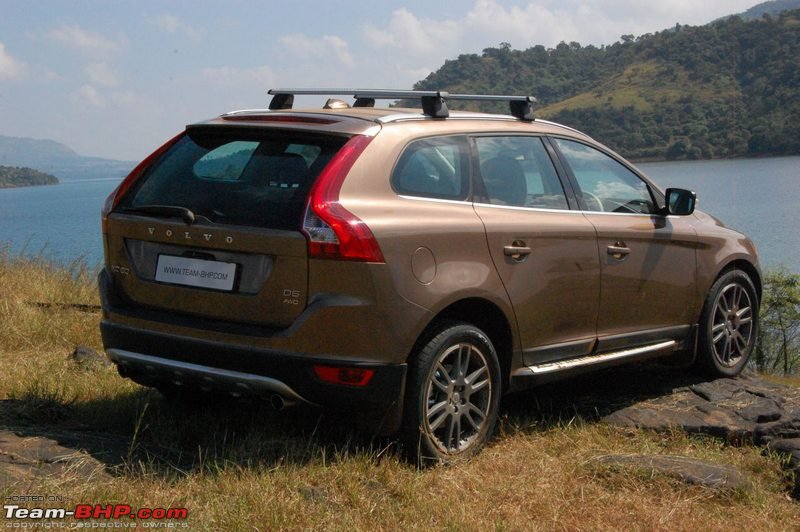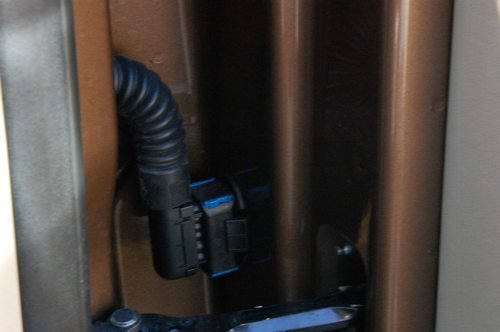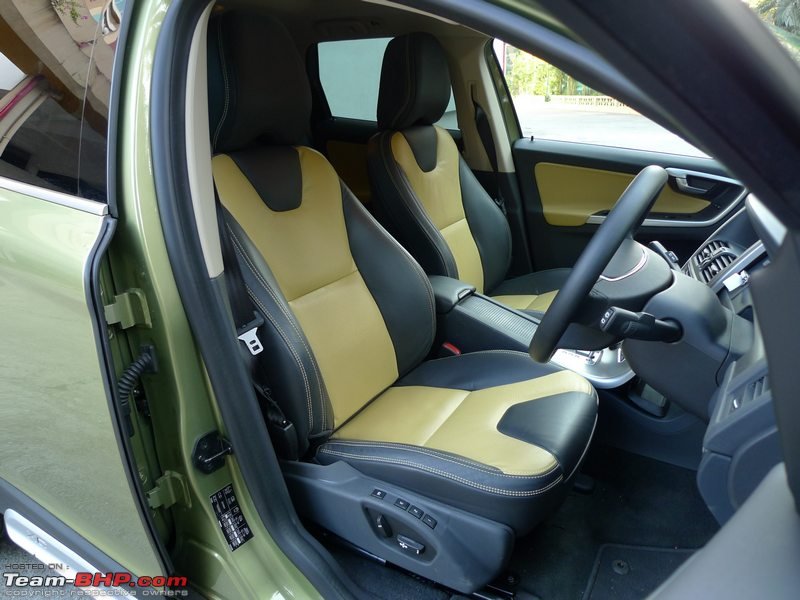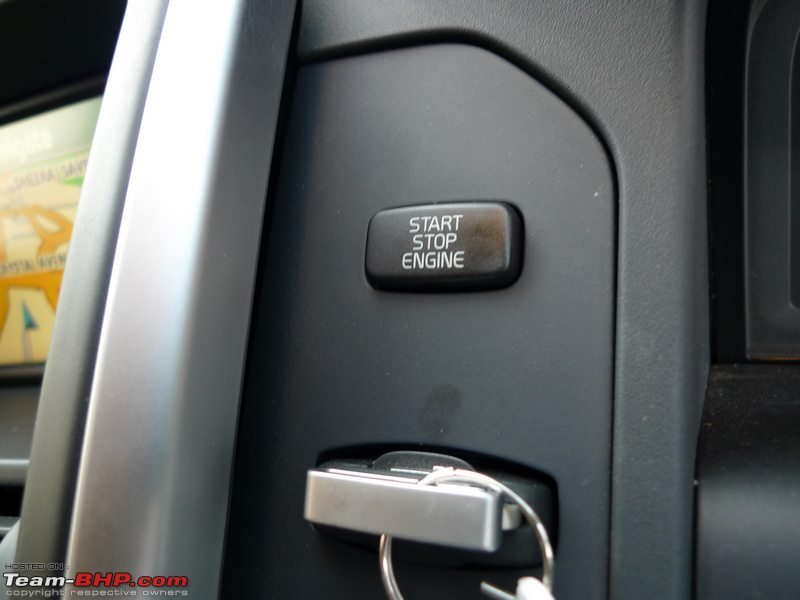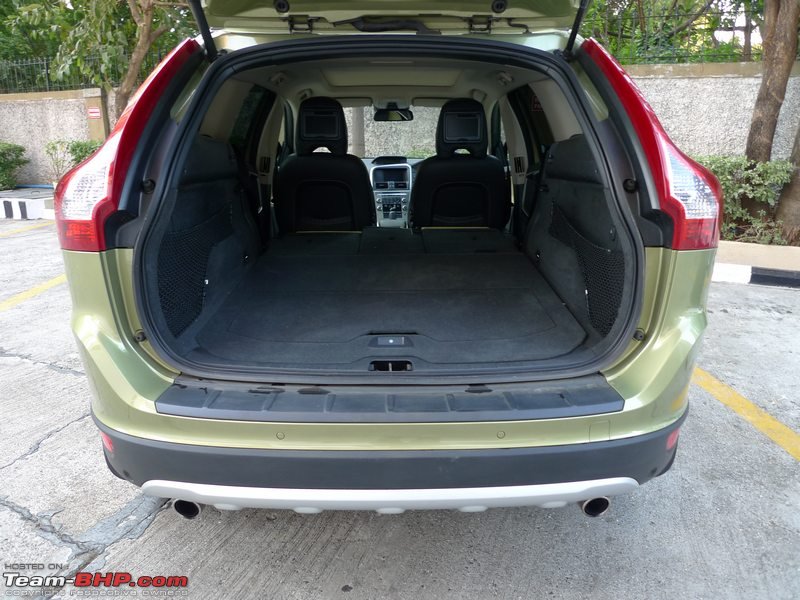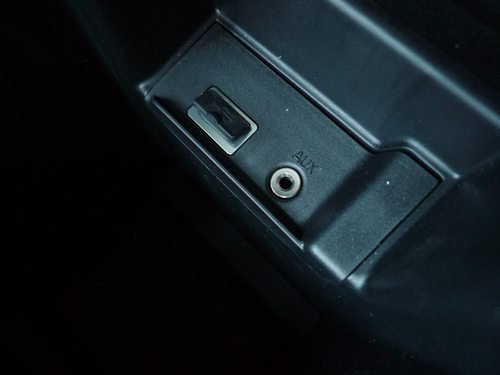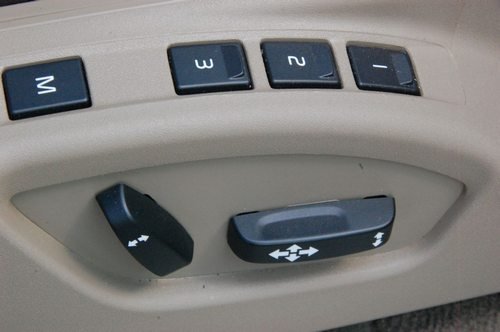
In some parts of the world, the XC60 comes with a 3.0 liter inline 6-cylinder petrol. Indians prefer oil-burning SUVs, hence we only get the 2.4 liter 5 cylinder twin-turbo diesel (that also does duty in the XC90). While the XC90 is tuned to 185 BHP, the XC60 puts out 205 BHP (@ 4,000 rpm). The XC60 at 420 Nm of torque (starting @ 1,500 rpm) has 20 Nm more than the XC90 too. Start driving and the first thing you notice is the gruff sound as the rpm needle climbs. Surprisingly, this 5 cylinder diesel is not as refined as its German counterparts. Engine noise is rather audible in the cabin. The 2.4 diesel feels tractable enough in the low to mid-rpm ranges, and will make light work of your daily driving route. Keep the accelerator pedal buried and the XC60 will complete a sub-10 second dash to the 100. In-city driveability is decent, and the engine is well suited to expressway cruising as well. However, and again, the motor gets fairly audible and doesn't seem too happy at higher rpms. It's more suited to a sedate driving style than an enthusiast's. The 6-speed automatic gearbox has smooth up / down shift quality. But the response time in kick-down mode leaves a lot to be desired. There is a noticeable delay, and you can feel a lag before the car suddenly surges forward.

The XC60 is equipped with Volvo's 4C feature (
Continuously Controlled Chassis Concept). There are three suspension modes to choose from; Comfort, Sport and Advanced. You will prefer to do most of your driving in
comfort suspension mode itself, where the ride quality is decidedly better. Though there is still an underlying firmness to the XC60 at city speeds, and the ride cannot be termed as plush, it is fairly acceptable. As the speedometer climbs, and like most other European cars, ride quality greatly improves. However, body roll is high in
comfort mode and thus, when on the highway, you will inevitably switch over to
Sport mode. The difference in ride and handling is immediately noticed. The ride further stiffens up (to the point of being too firm for city driving) and body roll is now far better controlled. In sport mode, the handling is very composed & grip levels solid. It corners almost flat! DSTC – a type of Stability Control program - continually monitors the car's direction, roll rate, steering wheel movements as well as the actual rotation of the car’s wheels to detect a potential skid, and helps counteract by reducing the engine’s output, or braking on one or more wheels. With the level of electronic assistance and the AWD system, you can have some fun throwing it around on snaky roads and ghat sections. Don't expect a Euro-sedan like driving experience though; the XC60 simply doesn't feel as "connected". High speed stability is excellent and the XC60 feels unshakable even at 200 kph. The steering weighs up nicely at speed too. However, within the city, you will find the steering to be on the firmer side (it isn't a super light unit like in the Mercs). Full marks to the braking capability. Even under emergency braking conditions, the XC60 is rock solid. The pedal itself feels a tad mushy and is lacking in feel.
The soft-track that Volvo had made in Lavasa offered some feel of its off-road capabilities. There were two amusing situations during the off-road test:
- A camel-test setup to gauge chassis torsion & suspension - built to army truck testing proportions - bottomed out the XC60's suspension.
- Someone, who broke the tenet "
keep constant pressure on gas pedal while going through mud" and stopped for some reason, promptly spun the wheels and sank in an attempt to power himself out of the situation.
Hill Descent Control takes the vehicle at gentle speed down a hill, without pressing the accelerator or brake pedals. When going uphill, it holds position (need not press the brake) till you accelerate. HDC works in both, forward as well as reverse gears:

City Safety is a very unique feature. At speeds up to 50 km/h, this laser-based technology can sense if a vehicle within 6-8 meters ahead, is at standstill or moving much slower than you are. If City Safety senses an impending collision, the brakes are pre-charged to act faster on the driver’s response. If the driver fails to brake, City Safety automatically applies the brakes (and how; one gets jolted awake by the jerk when the seat belt pulls) and switches off the throttle to help avoid a collision. City Safety is automatically activated when the car is started. It might seem like a useless feature for drivers who actually pay attention, but in today's day and age when most people are texting or BBMing in traffic, you never know.
The Collision Warning With Auto Braking (CWAB) Digital camera mounted behind the rear view mirror monitors the distance between you and the vehicle in front. If the system feels that you are getting too close to the car in front, a red warning light flashes on the windscreen. Tried it a couple of times myself and can confirm that it works like a charm. If you don't react to the warning and a collision is imminent, the brakes will activate automatically.
The windshield-mounted sensor & camera cluster also feed the "Lane Departure Warning system". It senses drifting to another lane if the turn signal is not on, and warns sleepy drivers:
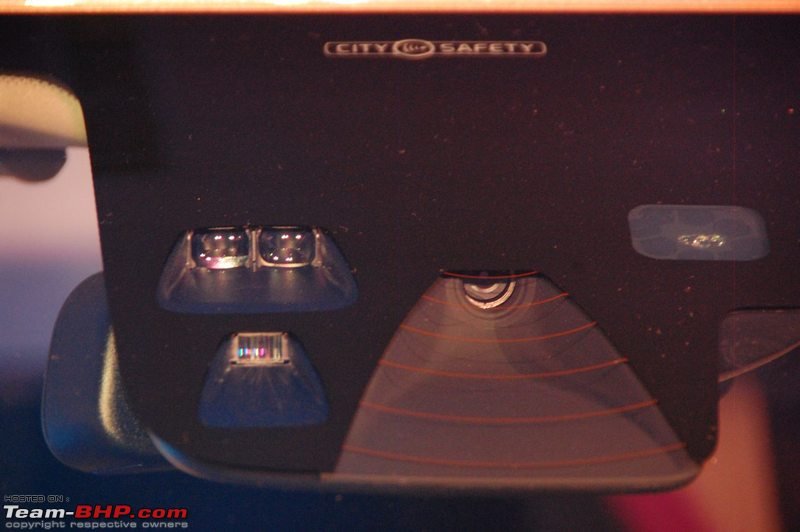
 (7)
Thanks
(7)
Thanks
 (7)
Thanks
(7)
Thanks
 (5)
Thanks
(5)
Thanks
 (7)
Thanks
(7)
Thanks
 (4)
Thanks
(4)
Thanks
 (7)
Thanks
(7)
Thanks
 (2)
Thanks
(2)
Thanks




 (1)
Thanks
(1)
Thanks




